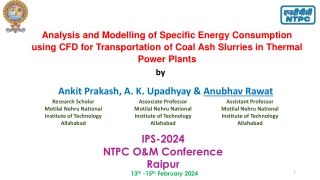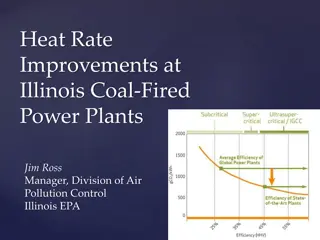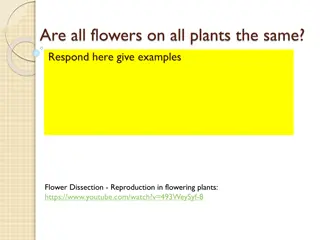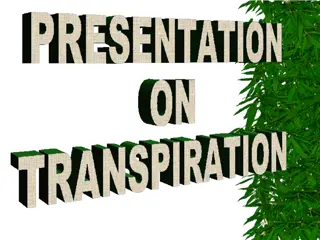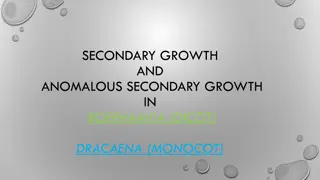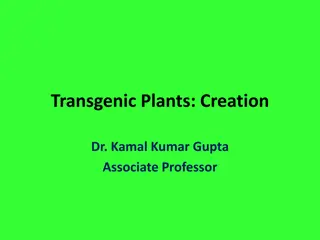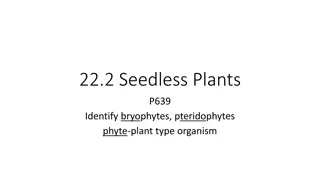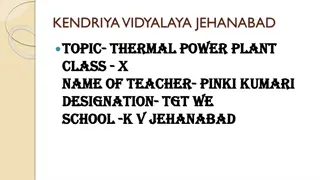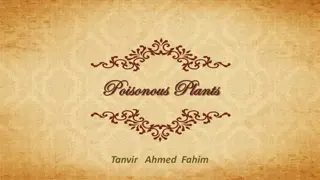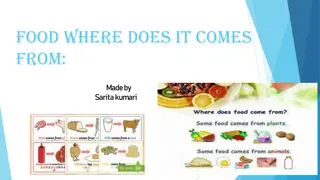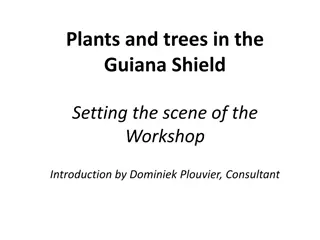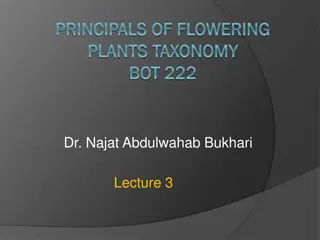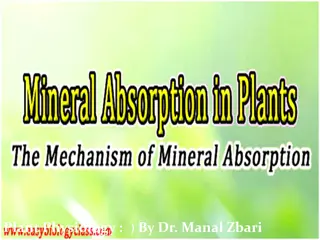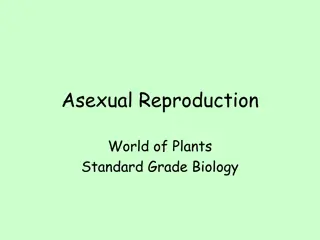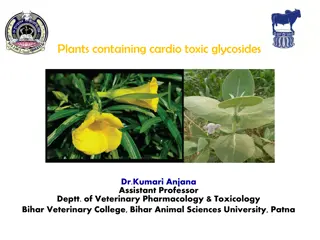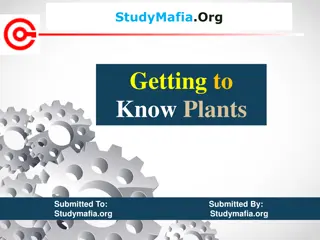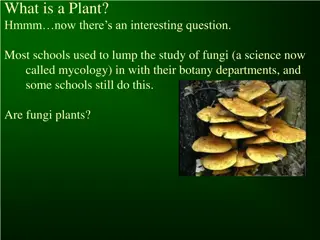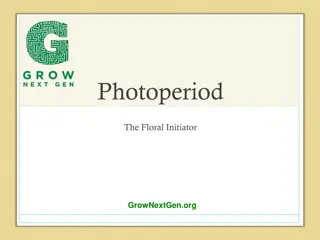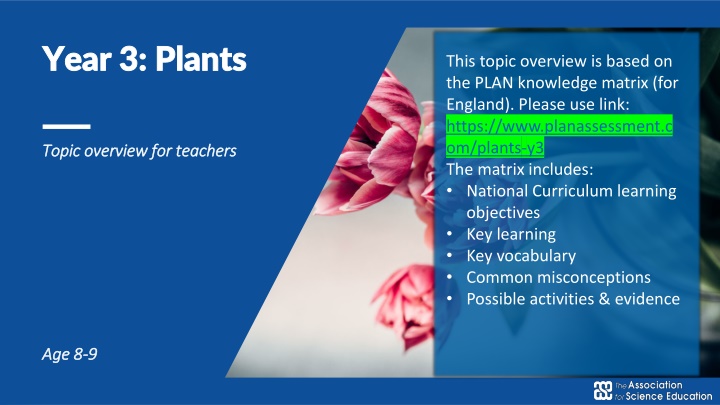
Plant Functions and Growth in Year 3 Curriculum
Explore the key learning objectives for Year 3 students on plants, including the parts and functions of plants, water transportation, pollination, seed dispersal, and how plants grow under different conditions. Engage in activities like dissecting plants, identifying parts, and learning about non-flowering plants to enhance understanding. Resources and practical experiments are provided to support teaching and learning about the world of plants.
Download Presentation

Please find below an Image/Link to download the presentation.
The content on the website is provided AS IS for your information and personal use only. It may not be sold, licensed, or shared on other websites without obtaining consent from the author. If you encounter any issues during the download, it is possible that the publisher has removed the file from their server.
You are allowed to download the files provided on this website for personal or commercial use, subject to the condition that they are used lawfully. All files are the property of their respective owners.
The content on the website is provided AS IS for your information and personal use only. It may not be sold, licensed, or shared on other websites without obtaining consent from the author.
E N D
Presentation Transcript
Year 3: Plants Year 3: Plants This topic overview is based on the PLAN knowledge matrix (for England). Please use link: https://www.planassessment.c om/plants-y3 The matrix includes: National Curriculum learning objectives Key learning Key vocabulary Common misconceptions Possible activities & evidence Topic overview for teachers Topic overview for teachers Age 8 Age 8- -9 9
Year 3 Plants Topic Key Learning Many plants, but not all, have roots, stems/trunks, leaves and flowers/blossom. The leaves use sunlight and water to produce the plant s food. Some plants produce flowers which enable the plant to reproduce. page What are the main parts and functions of plants? 4 How does water travel to different parts of a plant? Many plants, but not all, have roots, stems/trunks, leaves and flowers/blossom. 5 The roots absorb water and nutrients from the soil and anchor the plant in place. The stem transports water and nutrients/minerals around the plant and holds the leaves and flowers up in the air to help with photosynthesis, pollination and seed dispersal. What happens to plants when they are put in different conditions? Plants need certain conditions to grow well, including air, light, water, nutrients from soil, and room to grow. 6 Different plants require different conditions for germination and growth. 2
Year 3 Plants Topic Key Learning To know that pollen is a substance that causes plants to form seeds. page What is pollen and pollination? 7 Pollen, which is produced by the male part of the flower, is transferred to the female part of other flowers (pollination). Some plants produce flowers which enable the plant to reproduce. Exploring seed dispersal in plants The life cycle of flowering plants includes germination, pollination, seed formation and seed dispersal. 8 Seeds need to be scattered or dispersed so they can germinate away from the parent plant. This seed dispersal can be done by animals, water or the wind. 3
Plants Plants What are the main parts and functions of plants? What are the main parts and functions of plants? Activities and websites Exploring prior knowledge about plants. Key Learning Many plants, but not all, have roots, stems/trunks, leaves and flowers/blossom. https://www.bbc.co.uk/bitesize/topics/zy66fg8/articles/zcmtk2p https://www.bbc.co.uk/bitesize/topics/zpxnyrd/articles/zxxsyrd Dissecting a plant. Identifying the main parts of a plant and describing their purpose. The leaves use sunlight and water to produce the plant s food. Some plants produce flowers which enable the plant to reproduce. https://www.bbc.co.uk/bitesize/topics/zy66fg8/articles/zcjnp39 https://www.science-sparks.com/dissecting-flowers-and-more-plant- experiments/ Optional activity: Finding out more about non- flowering plants. I can identify the main parts of a plant and describe their purpose. https://www.dkfindout.com/uk/animals-and-nature/plants/non- flowering-plants/ http://studyjams.scholastic.com/studyjams/jams/science/plants/mo sses-and-ferns.htm 4
Plants Plants How does water travel to different parts of a plant? How does water travel to different parts of a plant? Activities and websites Exploring prior knowledge about how plants transport water. Investigating the way water travels through a plant using food colouring/dye. Key Learning Many plants, but not all, have roots, stems/trunks, leaves and flowers/blossom. The roots absorb water and nutrients from the soil and anchor the plant in place. https://www.bbc.co.uk/teach/class-clips-video/science-ks1-ks2-ivys- plant-workshop-how-does-water-get-from-the-roots-to-the- leaves/zdtfjhv The stem transports water and nutrients/minerals around the plant and holds the leaves and flowers up in the air to help with photosynthesis, pollination and seed dispersal. https://www.dkfindout.com/uk/animals-and-nature/plants/how- plants-make-food/ https://www.youtube.com/watch?v=KIug9Foou3s Optional activity to explore with more than one colour of dye. I can observe the effect of putting cut white carnations or celery in coloured water. https://www.youtube.com/watch?v=RVBueIzlR6Y 5
Plants Plants What happens to plants when they are put in different conditions? What happens to plants when they are put in different conditions? Activities and websites Considering the conditions needed for healthy plant growth. Key Learning Plants need certain conditions to grow well, including air, light, water, nutrients from soil, and room to grow. https://www.bbc.co.uk/bitesize/topics/zy66fg8/articles/zcmtk2p https://www.bbc.co.uk/bitesize/clips/z69rkqt Exploring plants in different conditions. Different plants require different conditions for germination and growth. https://www.bbc.co.uk/bitesize/clips/z9f87hv https://www.bbc.co.uk/teach/class-clips-video/science-ks1-ks2-ivys- plant-workshop-what-do-plants-need-to-survive/zkw2gwx I can investigate what happens to plants when they are put in different conditions. https://wowscience.co.uk/resource/grow-your-own-plants/ Optional activities: Finding out about plants in deserts and water-filled paddy fields; Finding out about carnivorous plants. (See website links on page 6 of the lesson) 6
Plants Plants What is pollen and pollination? What is pollen and pollination? Activities and websites Observing flowers in an outdoor space to look for pollinators. Key Learning To know that pollen is a substance that causes plants to form seeds. https://www.bbc.co.uk/bitesize/topics/zy66fg8/articles/zx4k tv4 Applying knowledge about pollinators to make a flower model that will attract insects. Pollen, which is produced by the male part of the flower, is transferred to the female part of other flowers (pollination). Some plants produce flowers which enable the plant to reproduce. https://www.bbc.co.uk/teach/class-clips-video/science-ks1- ks2-ivys-plant-workshop-what-is-pollination-and-how-does- it-work/zv4df4j Designing a garden which would encourage pollinators. Additional, optional activity to write an acrostic poem about pollination. I can observe flowers carefully to identify the pollen and pollinators. 7
Plants Plants Exploring seed dispersal in plants Exploring seed dispersal in plants Logo for section to sit inside roundel Key Learning Activities and websites The life cycle of flowering plants includes germination, pollination, seed formation and seed dispersal. Exploring prior knowledge about the life cycle of a plant. https://explorify.wellcome.ac.uk/en/activities/whats-going- on/shooting-sprouts/classroom?view-type=public Seeds need to be scattered or dispersed so they can germinate away from the parent plant. This seed dispersal can be done by animals, water or the wind. Comparing different ways plants disperse their seeds. https://www.bbc.co.uk/programmes/p00lxv9z https://www.bbc.co.uk/programmes/p00lxw4t https://www.bbc.co.uk/bitesize/clips/zs9c87h I can Optional activity to find out more about some unusual ways seeds are dispersed by animals. explain why and how the seeds of plants are dispersed. (BBC clips from Private Life of Plants on p.7 of the lesson plan.) 8

